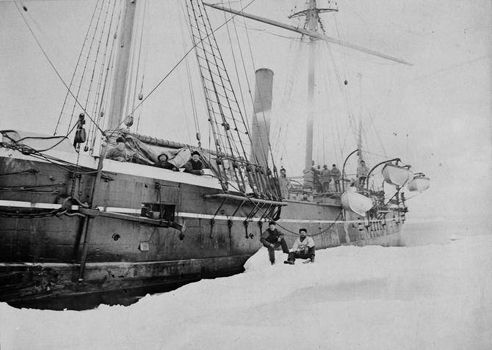Reading time: Just over 1 minute
Increase your vocabulary and you’ll make your writing much more precise. That’s why I provide a word of the week. Today’s word: cynosure…
I’m always thrilled when readers suggest books I can read. About two months ago, Harry Herskovitz recommended to me In the Kingdom of Ice: The Grand and Terrible Polar Voyage of the USS Jeannette.
The gripping account of a disastrous 1879 US polar expedition, (the boat is shown trapped in ice, above) the book immediately struck me as the kind of story my husband would enjoy. I bought him a copy for his birthday. Turns out he loved it and then so did I. Many reviewers describe the book’s story as similar to a “thriller” and we both certainly found that to be the case.
Equally interesting, to me at least, was the description of the supposed “open Polar Sea” — a notion hypothesized starting in the 16th century, that there was an ice-free ocean surrounding the North Pole. (This crazy idea arose out of the belief that sea ice forms only in proximity to land — now known to be false — and the observation that there is perpetual sun during the Arctic summer, and the assumption that it would melt all the ice. As well, scientists who studied ocean currents in the 19th century thought that warm northward currents such as the Gulf Stream must rise to the surface and result in an ice-free sea near the pole.)
In any case, I found the book both educational and hard to put down. It also gave me my word of the week, cynosure. Here is how the author, Hampton Sides, used it:
“The taut little bark,” said the Daily Alta California, was “the cynosure of thousands of eyes.”
The noun, cynosure, means a person or thing that is the centre of attention or admiration. Latterly from Middle French, but originally from the Greek, kynosoura, the word means “dog’s tail,” referring to the the constellation (now Ursa Minor) containing the North Star. Kyon means “canine” and oura means “tail.”

